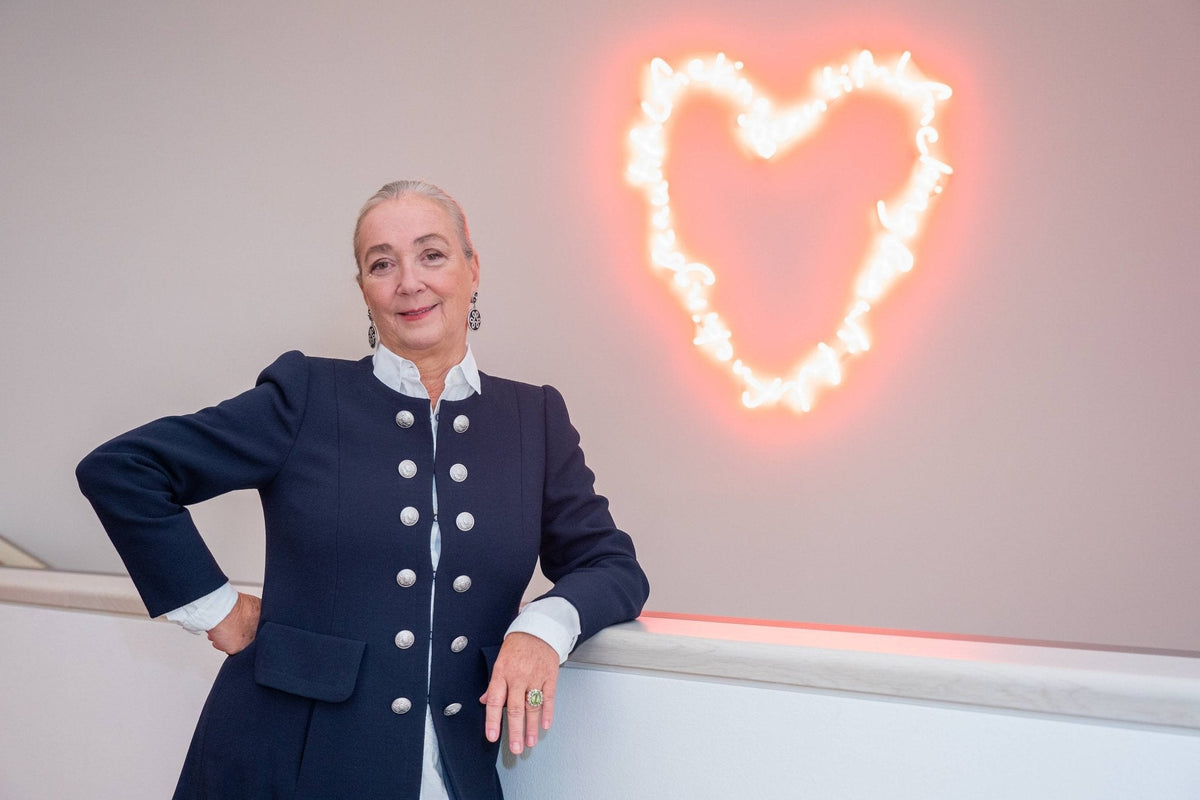No Products in the Cart

An Agent of Change: A Conversation with Dr. Agnes Husslein-Arco
I sat down with Dr. Agnes Husslein-Arco to talk about art—but quickly found myself listening in awe. Agnes is a force of nature in the art world, and her stories read like a living time document: a case study of how one woman shaped, and at times disrupted, the cultural landscape—not only in Austria, but far beyond. I hope you enjoy our exchange as much as I did.
A Quick Profile
- Full Name: Dr. Agnes Husslein-Arco
- Born: May 22, 1954, Vienna
- Background: Art historian, curator, museum director
-
Education: Art history studies in Vienna and Paris (Sorbonne)

Key Roles & Career Milestones
- Dorotheum, Vienna – Early career in Austria’s leading auction house, where she first encountered the art market up close.
- Sotheby’s – Intern in New York; later Senior director of the Modern and Contemporary art Department, London, then founded and directed Sotheby’s Austria (and expanded into Budapest & Prague), introducing innovative networking-driven sales concepts.
- Guggenheim Museum (New York) – Director of European Development (1990–1998), coordinating the institution’s activities and projects across Europe.
- Rupertinum / Museum der Moderne, Salzburg – Founding Director, where she launched contemporary programs and oversaw the development of the Hollein Museum im Berg project.
- Austrian Gallery Belvedere, Vienna – Director (2007–2016). She revitalized the Baroque building transferring it into a museum comprising works from the middle ages to contemporary art, repositioning it internationally and increasing visitors from 300,000 to 1.3 million per year.
- Heidi Horten Collection Museum, Vienna – Founding Director and curator (2018–present), shaping one of Austria’s most important private collections into a public cultural legacy.
- Current: Curator, consultant, and active in cultural politics & philanthropy

The Conversation
Petra Berg (PB): You are often described as one of the most prominent—and sometimes polarizing—figures in the Austrian art and cultural scene. How do you see yourself? Are you an agent of change?
Agnes Husslein-Arco (AHA): A little bit like that (laughs). When I started more than 40 years ago, the Austrian art market was dark, dusty, and far from vibrant. That has certainly changed—and I like to think I was part of that shift.

PB: How did you first get into art?
AHA: My father suggested I study art history. At first, I wasn’t a fan—it felt boring and stuffy. But my first job at Vienna’s Dorotheum changed everything. Meeting dealers, seeing great art, that’s when I got hooked.
PB: Austria at the time was still in a “Dornröschenschlaf” (Sleeping Beauty slumber). How did you manage to build a career?
AHA: I married a doctor, and when he got an offer to work in New York, I moved there too. I became an intern at Sotheby’s and, to make money, gave figure skating lessons—I was once Austrian champion in figure skating. It was a fabulous time. When I returned to Vienna, I opened Sotheby’s Austria.

PB: What was your approach with Sotheby’s Austria?
AHA: Networking. I broke away from closed-door dealing. I hosted dinner parties under the art we wanted to sell—mixing aristocrats, artists, bankers, dealers. We talked art until 2am. It was a new way of creating energy and dialogue.

Max Hollein, Ingrid Flick, Elisabeth Sturm-Bednarczyk and husband, Thomas Krens, Wolfgang Prix, Agnes Husslein
PB: Later, you collaborated with the Guggenheim. How did that happen?
AHA: Through family connections I met Thomas Krens, the Guggenheim director. I showed him Hans Hollein’s Museum im Berg design in Salzburg—he wanted it as a Guggenheim outpost. Politically, it was killed, but it laid the foundation for me to lead the Rupertinum and later the Museum der Moderne.
Wolfgang Prix, Coop Himmelb(l)au, Barbara Steffen, Hans Hollein, Agnes on the occasion of the reopening of the Guggenheim New York, 27 June 1992.
PB: In Salzburg you caused a stir with the artist group Gelatin’s provocative sculpture.
AHA: (laughs) Yes, people weren’t ready for that. So I went to Vienna, to wake up the Baroque palace Belvedere from its slumber.
PB: At the time, Belvedere was a dusty place.
AHA: Exactly! A beautiful Baroque museum yet overlooked. We renovated, re-conceptualized, and spotlighted Austrian masters like Klimt and Schiele. We grew from 300,000 to 1.3 million visitors a year.

PB: You put the Belvedere on the global map. How do you see museums evolving today?
AHA: Rising costs will make international loan exhibitions rarer. Museums must focus on their core collections—their true strengths. For example, the Albertina with its unparalleled drawings. Digital will play a role, but nothing replaces standing in front of a real work of art.

PB: You were also instrumental in creating the museum for the Heidi Horten Collection.
AHA: Yes, Heidi Horten asked me to help her build a collection and later a museum. It became a true legacy project—world-class architecture, prime location, and one of the best collections in Austria.

PB: As a woman in leadership, how did you experience the art world?
AHA: Honestly, in Austria it was not easy. Being good-looking, strong-minded, and successful—still a “no-go” for many. There are more women in leadership now, but often due to quotas. And too often, women don’t support each other enough.

PB: What still drives you creatively today?
AHA: I walk through the world with open eyes. I still have visions, projects, fantasies. It has to be about vision, class, and quality.

PB: If you could dream up a museum of the future, what would it look like?
AHA: The Heidi Horten Museum comes very close to my dream.



